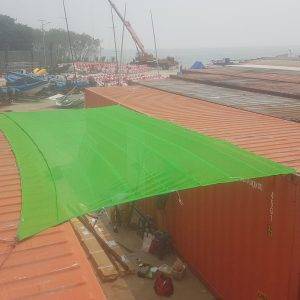Harnessing Renewable Energy: Transforming Your Home into an Eco-Friendly Powerhouse
Construction Safety Netting is a crucial element in any construction site to protect workers, pedestrians, and property from falling debris and other hazards. With the potential risks involved in construction work, it is essential to prioritize safety measures to prevent accidents and injuries. In this article, we will discuss the importance of construction safety netting and how it can help create a safer work environment.
Safety Netting Installation
Installing safety netting at a construction site is a straightforward process that can be done by trained professionals. Safety netting is typically made from durable materials like polypropylene or nylon, designed to withstand impact and absorb the energy of falling objects. The netting is attached to the framework of the building or structure, creating a protective barrier around the perimeter.
Benefits of Safety Netting
There are several benefits to using safety netting in construction projects. One of the main advantages is the prevention of injuries and accidents caused by falling debris. Safety netting provides a cushioning effect, minimizing the risk of serious injuries to workers or pedestrians below.
Additionally, safety netting can help improve productivity on the job site by creating a safer work environment. When workers feel secure and protected, they can focus on their tasks without worrying about potential hazards. This can lead to increased efficiency and a decrease in downtime due to accidents.
Furthermore, safety netting can also protect adjacent properties and passersby from falling debris. This is especially important in urban areas where construction sites are located near residential or commercial buildings. By using safety netting, contractors can mitigate the risk of damage or injury to surrounding structures and individuals.
Types of Safety Netting
There are different types of safety netting available for construction sites, depending on the specific needs of the project. Some common types of safety netting include debris netting, scaffold netting, and edge protection netting. Each type of netting is designed for a specific purpose, such as containing debris or providing fall protection for workers.
FAQs
Q: How often should safety netting be inspected and maintained?
A: Safety netting should be inspected regularly by trained professionals to ensure that it is in good condition. Any signs of wear or damage should be addressed immediately to maintain the effectiveness of the netting.
Q: Can safety netting be reused on multiple projects?
A: Safety netting can be reused on multiple projects as long as it is in good condition and meets safety standards. However, it is essential to inspect the netting before each use to ensure its integrity.
Q: Are there regulations that govern the use of safety netting on construction sites?
A: Yes, there are regulations set by OSHA (Occupational Safety and Health Administration) that govern the use of safety netting on construction sites. Contractors must comply with these regulations to ensure the safety of workers and the public.
In conclusion, construction safety netting is a critical component of any construction project to ensure the safety of workers, pedestrians, and property. By investing in quality safety netting and following safety regulations, contractors can create a safer work environment and minimize the risk of accidents and injuries. If you have any questions about safety netting or need assistance with your construction project, feel free to contact us for expert advice and solutions.






